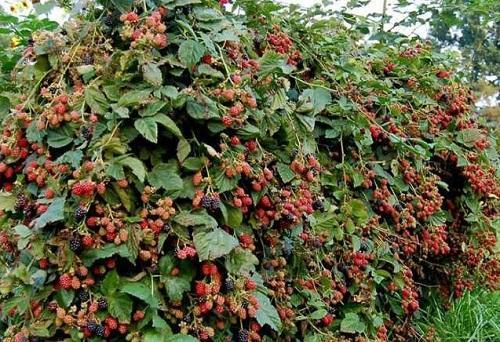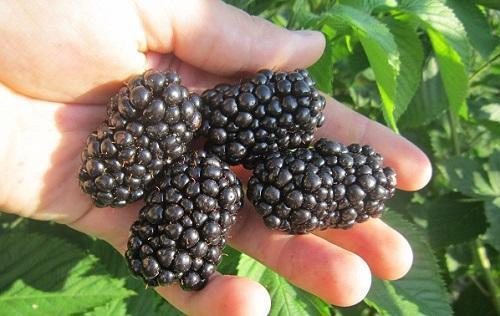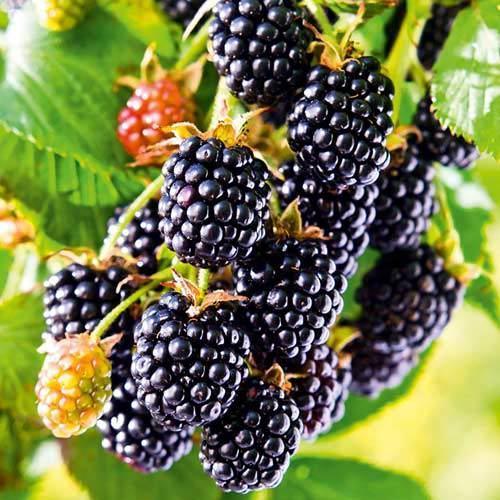Choosing a blackberry without thorns for giving
 Blackberries in garden plots are not such a rare phenomenon. Its black berries are delicious and healthy. However, many gardeners are discouraged by the presence of sharp thorns on the shoots. Indeed, harvesting or pruning turns into a real torture: thorns firmly cling to clothes and scratch hands until they bleed.
Blackberries in garden plots are not such a rare phenomenon. Its black berries are delicious and healthy. However, many gardeners are discouraged by the presence of sharp thorns on the shoots. Indeed, harvesting or pruning turns into a real torture: thorns firmly cling to clothes and scratch hands until they bleed.
However, growing black berries can be quite “painless” if purchased blackberry varieties without thorns. In terms of taste, they are not inferior to their thorny counterparts, and it is much easier to care for such a shrub.
The most famous types of thornless blackberries include:
- Chief Joseph;
- Black Satin;
- Navajo;
- Doyle.
Variety Chief Joseph

A powerful shrub with semi-creeping shoots, it branches well and grows very quickly, reaching a height of more than 4 m, but at the same time it has little root growth. Bears abundantly in August for 1.5 months. For 4 years after planting, more than 30 kg of berries weighing 12 g each can be harvested from one bush. The fruits of the variety are sweet and sour; in a rainy summer, sourness prevails in the taste.
Semi-recumbent shoots are easy to cover for the winter, but the vine is not very flexible and sometimes breaks.
The variety is resistant to diseases and pest damage, and also acclimatizes well in different regions.
Black Satin variety

A tall bush can reach up to 7 m in height. The branches grow vertically, but when they reach 1.5 m, they move to a horizontal position. Does not grow outside the garden. Slightly elongated berries ripen at the end of July, have a sweet taste and strong aroma. Productivity from one bush - up to 25 kg.
The fruiting period lasts until September, and often not all berries have time to fully ripen before the onset of the first frost.
In general, the variety is rarely sick, but sometimes it is affected by gray rot. In severe frosts, the tops may freeze.
Navajo variety

A medium-sized shrub with straight shoots no more than 2 m in height. One of the most unpretentious varieties, easy to care for, can grow in shaded areas. Fruiting begins in late August and lasts until the end of September. The berries are not very large (up to 7 g), but they cover the branches abundantly - up to 400 pieces per one. The taste is dominated by sweetness, without a tart note.
One of the advantages of the variety is its good transportability.
Navajo practically does not get sick and does not require shelter in regions with not very cold winters (up to 20 degrees below zero).
Doyle grade

One of the newer hybrid varieties with maximum yield. The bush has horizontal shoots and grows up to 4 m in height. The berries begin to ripen in July, they are small (5-8 g), but about 100 fruits are tied on one cluster. Ripe blackberries are very aromatic and tasty, with a slight sourness.
The variety has a high drought tolerance and almost does not get sick, but needs shelter in frosty winter.